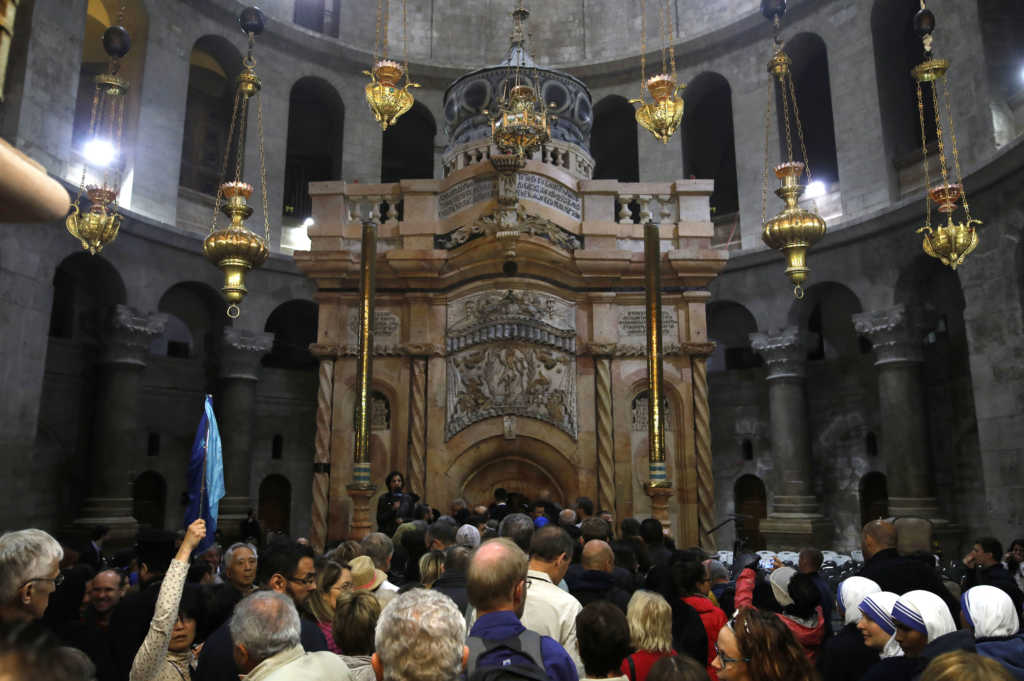Excitement has been afoot after workers completed a multi-million dollar restoration project inside the Tomb of Christ, the area inside the Church of the Holy Sepulchre where some believe Jesus was laid to rest after his crucifixion.
And while scores of believers are elated over the unveiling of the $4 million project, scientists made some discoveries during the process that have sparked fears about the future stability of the structure.
According to National Geographic, experts believe there’s a “very real risk” that the Tomb of Christ could collapse if nothing is done to fix its foundations after a team with the National Technical University of Athens found during the restoration process that more work is needed to ensure that nothing catastrophic unfolds.
“When it fails, the failure will not be a slow process, but catastrophic,” Antonia Moropoulou, the university’s chief scientific supervisor, told the outlet.
As it turns out, there’s a deep history at the site — one that involves the construction and presence of a variety of structures over thousands of years. Around 2,000 years ago, it is believed that the site was a defunct limestone quarry before later becoming the home of tombs for the wealthy.
At some point, it is believed that a Roman temple was built on the site, though that was later destroyed as well.
Part of the area also sits on older rubble, leading experts with the university to propose a multi-million dollar project that would allow for repairs to the foundation as well as the installation of rainwater drainage and sewage systems.
The news comes at the conclusion of the 9-month restoration project, which focused on the Edicule, a small structure that supposedly holds the cave that some believe was the burial chamber of Christ. The former system that propped up the walls has been replaced and black soot from visitors’ candles has been scrubbed away, as NBC News reported.

The fixes came after Israeli police briefly shut down the ceiling in 2015, claiming it was unsafe; repairs began the next year in June 2016, according to the AP.
“We didn’t dismantle the monument, we didn’t jeopardize its structural integrity. We just restored it,” Moropoulou told NBC. “Now you can see the colors, the texture of the stone, you can see the letters of inscriptions, the frescos, the different styles of mural paintings. So here is a monument that was worshipped through the centuries and will be worshiped forever.”
Experts have said that there could have been a collapse had experts not taken those steps, as the Guardian reported.
Faithwire previously reported about some of the initial findings. Read more about the restoration here.
(H/T: National Geographic)
—
Other Must-Read Stories:
– Why the Mystery Surrounding Supreme Court Nominee Neil Gorsuch’s Faith is Sparking Debate
– What Was Daily Life Like for Jesus? Archaeologists are Now Painting a Much Clearer Picture



